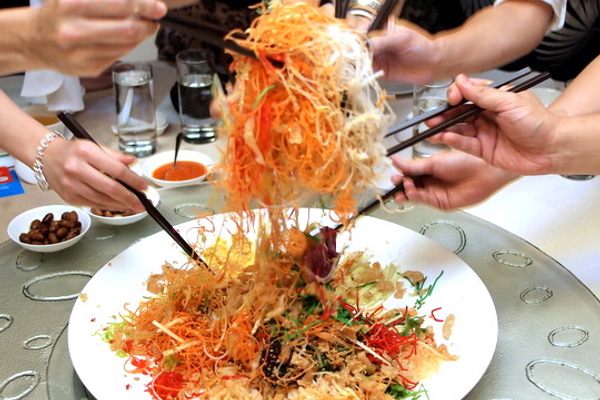Good luck offerings abound around the New Year, but few are as distinctly Southern as Hoppin’ John. In the United States, Hoppin’ John—a savory combination of rice, beans, and pork—has been ladled into Low Country dishes for centuries, becoming one of the country’s most iconic New Year’s Day suppers. And while mysteries persist concerning the origins of the catchy name, a few things are clear about its preparation and flavor.
According to most food historians, enslaved people in the antebellum South brought a rice preparation similar to pilaf (alternately called pilau, purloo, or perlo) from West Africa. In contrast to modern cooking methods, these rice dishes were made with everything tossed into one pot. First boiled, then drained, and finally set over the fire to steam, the broth, meat, and beans would flavor the robust rice by bringing together a melange of smoky, nutty, and umami into one hearty dish. Served with a side of greens (such as collard, turnip, or mustard) and a slice of cornbread, the combination exemplifies the ample yet unfussy comforts many look for in Southern fare.
Despite its simplicity, in the 20th century, Hoppin’ John became known as a food of fortune. Often served with collard greens, the dish cashes in on two prosperous symbols. Legend holds that the peas represent coins and the greens, of course, good ol’ American greenbacks (dollar bills).
Lucky or not, one of the enduring debates regarding Hoppin’ John has been about its modern flavor. As Robert Moss of Serious Eats points out, Hoppin’ Johns of yore neither used the black eyed peas nor the long grain rice that most recipes use today. Instead, red cow peas were the preferred bean and hand-harvested Carolina gold rice the staple grain. The hogs were heritage breeds, raised on local farms and slow-smoked to impart maximum flavor. Some argue that today’s breeds, which have been designed to withstand commercial production, suffer from a lack of flavor and texture. Those looking to capture the traditional taste should seek out small-scale producers growing heirloom varieties or smoking hogs using older methods.
As for the jaunty moniker, Hoppin’ John, the title may undergo even more scrutiny than the dish’s flavor. While some contend that “Hoppin’ John” comes from a Southern welcome of “Hop in, John,” others suggest that it’s more likely a take on the French pois à pigeon (for pigeon peas). Regardless, for many, a whoppin’ serving of Hoppin’ John is essential to a ringing in the New Year.
Where to Try It
-
Pittypat’s Porch Restaurant
25 Andrew Young International Blvd NW, Atlanta, Georgia, 30303, United StatesThe dinner salad bar includes items like pickled watermelon rind and Hoppin' John.
-
Sweet Home Cafe Website
1400 Constitution Avenue NW, Washington, District of Columbia, 20560, United StatesThis restaurant, located in the National Museum of African American History and Culture, specializes in historical and present-day African American cuisine.
Written By
 Leigh ChavezBush
Leigh ChavezBush













